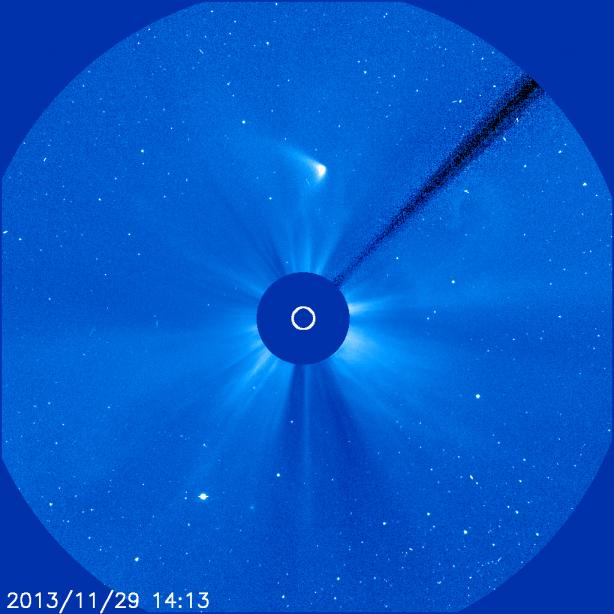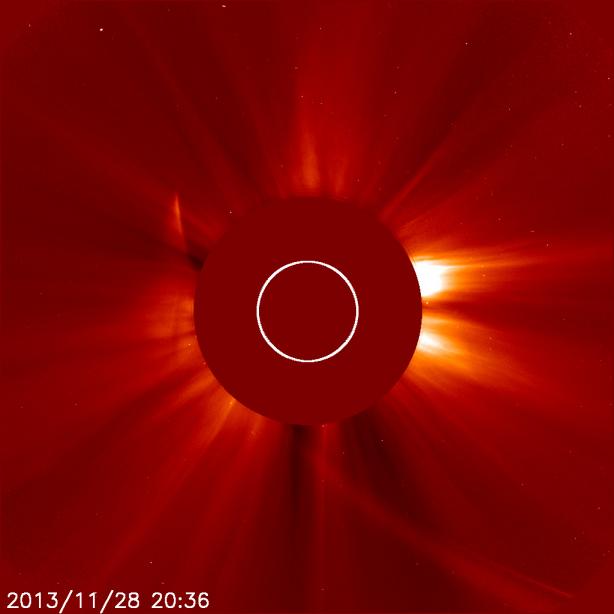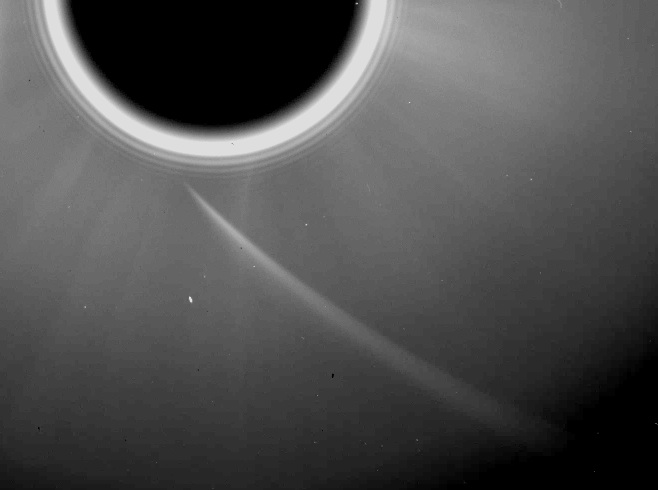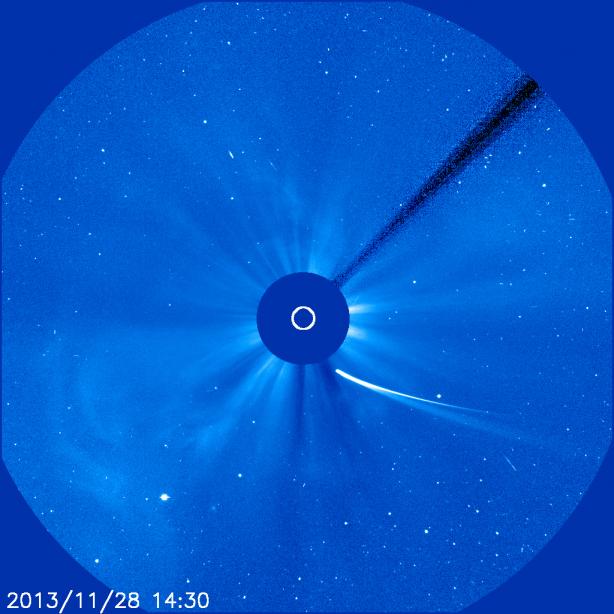COMET ISON T+2 DAYS SINCE PERIHELION
2013-Nov-30
Before starting this update on the status of Comet ISON, I would like to put a call out for everyone to send in their ISON images and observations ASAP. We will be producing an article for the next issue of the Strolling Astronomer /JALPO and would like to include as much ALPO produced results as possible. Please send your observations (and especially your images in FITS format, if possible) to Carl Hergenrother [chergen (at) lpl.arizona.edu].
It is now over 2 days since Comet ISON made its extremely close pass of the Sun. The comet is currently 0.17 AU from the Sun and moving further away by the minute. It is also 0.87 AU from Earth, a value that will decrease to a minimum of 0.43 AU a few days after Christmas.
There has been a lot of speculation that the nucleus of ISON may have experienced a major disruption (i.e. broke up into many smaller pieces) in the hours prior to perihelion. This speculation was based on a radical change in the morphology of the coma of the comet and its similarity with the morphology of other comets (sun-grazers and non-sun-grazers) that are know to have disrupted and disappeared after such events.
Since perihelion the coma of the comet has failed to regain any appreciable central condensation and looks more and more like a slowly expanding cloud of dust. The lack of a tail pointing in the anti-solar direction also suggests that there has been little dust production since the time around perihelion.
Unless something dramatically changes with ISON, it looks like the comet will reappear in a dark sky sometime this week or next as a large diffuse cloud of less than naked eye brightness. It may not be visually exciting though some wide-field CCD imagers may get some amazing images.
- Carl Hergenrother (Acting Co-coordinator of ALPO Comet Section)
Image of Comet ISON from the LASCO C3 instrument on the NASA/ESA SOHO spacecraft from 2013-Nov-30 @ 20:42 UT. The comet is the very diffuse cloud near the edge of the FOV at ~1 pm.









